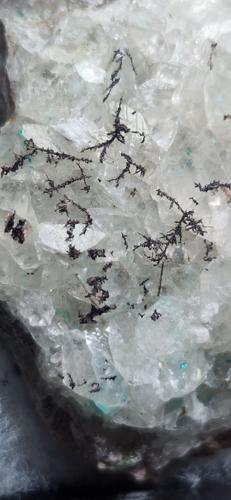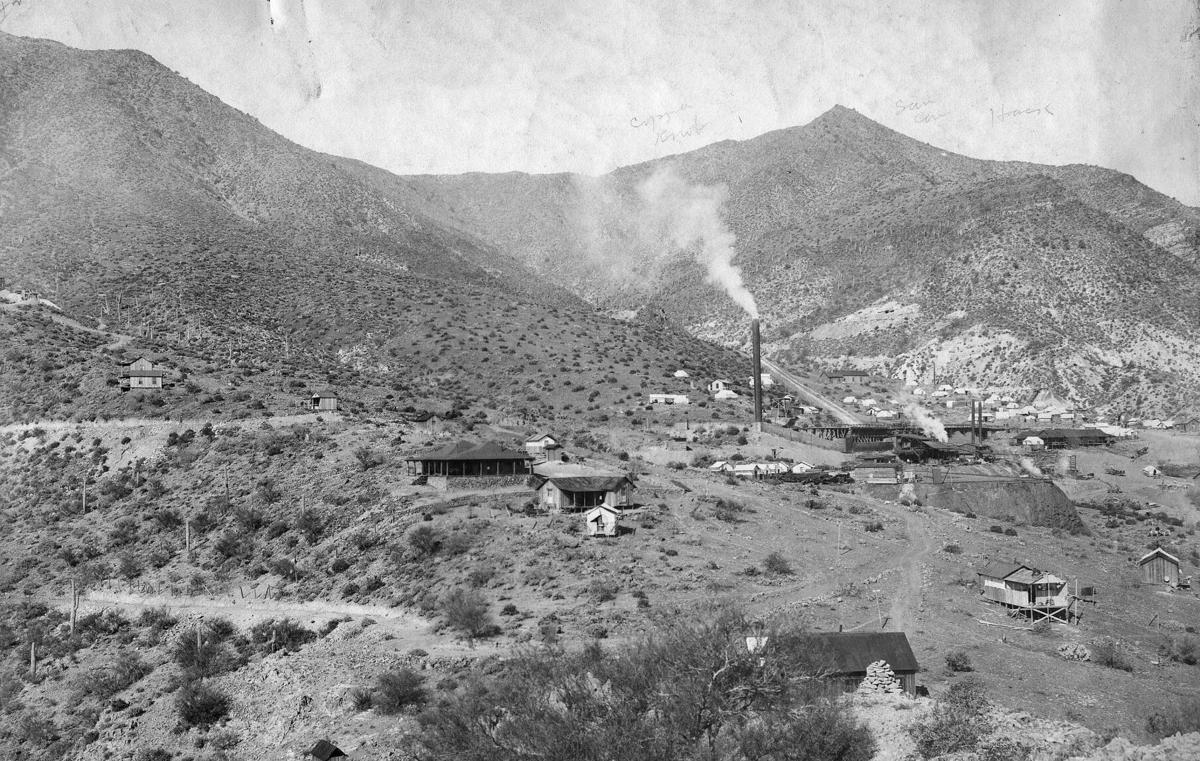Minerals have always been held in high regard in Arizona’s history, having been the driving force for settlement and economic expansion throughout the region.
William P. Blake, director for the School of Mines at the University of Arizona and territorial geologist, published the first list of minerals found in Arizona in 1866 and a more comprehensive one in 1909 outlining 102 species.
At present, Arizona is known to host 992 valid mineral species and no doubt more will be discovered in the future. Currently there are around 6,000 mineral species based upon crystal structure and chemical composition recognized by the International Mineralogical Association.
Below are some select sites in Arizona that have produced a number of prized mineral specimens. The history of the mines is as rich and varied as the minerals themselves.
The Christmas Mine, 75 miles north of Tucson in the Banner Mining district, was discovered in 1880. It wasn’t until 1905 that production began due to challenges involving transportation and refinement. Over 80 minerals have been documented at the Christmas Mine including four type-locality minerals (minerals representing the site where they were first documented and confirmed to be a new mineral species). These include apachite, gilalite, junitoite and ruizite.

Thumbnail acicular spray of aurichalcite needles from the Seventy Nine Mine.
Geophysical survey and diamond drilling conducted by Freeport-McMoRan Inc. in recent years confirmed mineral reserves at the Christmas Mine of approximately 332 million short tons, assaying 0.40% copper, 0.0017 ounces of gold per ton, and 0.032 ounces of silver per ton.
The Bagdad Mine, in the Eureka Mining district in Yavapai County, has been a copper producer since its discovery in the early 1880s. Prospectors were drawn by the red and brown iron stain on exposed granite porphyry rocks that saw profit off of the widespread mineralization. The mine was operated in 1906 with limited success by the Giroux Syndicate affiliated with J.L. Giroux, former general manager of Sen. William A. Clark’s Colusa Mine in Butte, Montana.
Multiple companies followed including the Bagdad Copper Co. and the Arizona-Bagdad Copper Co., which began mapping the ore body after conducting a series of churn drills. By 1926 ore was leached onsite. Block caving methods were implemented to profit off the lower grade disseminated copper deposits.
J.C. Lincoln, president of the Lincoln Electric Co., acquired the dominant stock at the Bagdad Copper Corp. Under his direction, mill capacity was improved, and costs were lowered, involving a more consolidated tailings disposal. Open-pit mining commenced in 1945 and continues to this day under the management of Freeport-McMoRan. Bagdad produced some noteworthy mineral specimens including cuprites with sharp, lustrous, well-defined red colored crystals. Other mineral specimens include native copper, connellite and chalcotrichite.

Arborescent copper thumbnail from the Bagdad Mine.
The San Manuel disseminated copper deposit is credited as having once been the largest underground copper mining operation in the world. Production occurred from 1956 until the mine closed in 2003. Total production of copper and molybdenum was 4,651,600 short tons and 73,200 short tons. Notable minerals include atacamite, copper, gold and molybdenite.
Another mine of historic significance is the Iron Cap Mine, a mile north of Landsman Camp in the Santa Teresa Mountains. The Iron Cap Mine, a silver, lead, zinc producer from replacements in limestone, was developed by the Athletic Mining Co. from 1942 until 1949. An onsite 100-ton per day flotation concentrator built in 1949 processed lead and zinc ore. Collectible minerals found on site include manganbabingtonite, a calcium iron silicate hydroxide (similar to babingtonite with a greater concentration of manganese), along with axinite, johannesite and nekoite.
Named after its discovery date in 1879 by Mike and Pat O’Brien, the Seventy Nine Mine saw sporadic production in the following decades as miners developed the mine to the 660-foot level on a 55-degree incline. Onsite milling operations included crushers, elevators, screen and tables used to treat the lead carbonate ores. Water pumped from the shaft was used to run the mill. Metals of economic interest included lead and zinc ore. Lead ore was in the form of cerussite along with some anglesite and wulfenite and vanadinite. The mine is known for having produced many mineral specimens including uncommon or rare secondary minerals such as descloizite, ktenasite, murdochite and plattnerite along with fine specimens of aurichalcite.

The carving of a shelf for a railroad grade to transport ore near the Christmas Mine circa 1906.
The Red Cloud Mine is one of the most renowned collecting localities of Arizona’s State mineral wulfenite. First mined by the “single jack” method (miner using a hammer driving chisel pointed steel into rock) in the late 1870s, the ore was sorted and high-graded underground, carried to the surface on the back of the miners and by rawhide buckets, and transported by burros to the Colorado River for shipment by boat for refinement to Wales. Operated by the Red Cloud Mining Co. the following decade, it was mined profitably for lead, silver and zinc. Over the next century, the mine operated sporadically based upon a fluctuating silver market. The early 21st century saw the mine become more open to collectors for a fee.

Thumbnail wulfenite blade on tertiary breccia matrix from the Red Cloud Mine.

Small cabinet specimen of copper on calcite from the Christmas Mine.

Thumbnail specimen of the rare secondary copper chloride mineral atacamite from the San Manuel Mine.

Thumbnail covellite on hemimorphite from the Seventy Nine Mine.

Thumbnail specimen of red, fibrous, cuprite variant chalcotrichite crystals from the Bagdad Mine.

Small cabinet specimen featuring tabular crystals of manganbabingtonite with johannesite from the Iron Cap Mine, Aravaipa Mining District, Graham County, Arizona.
How well do you know Arizona? Here is another quiz to test your knowledge on Arizona history and facts. Video by Pascal Albright / Arizona Daily Star














